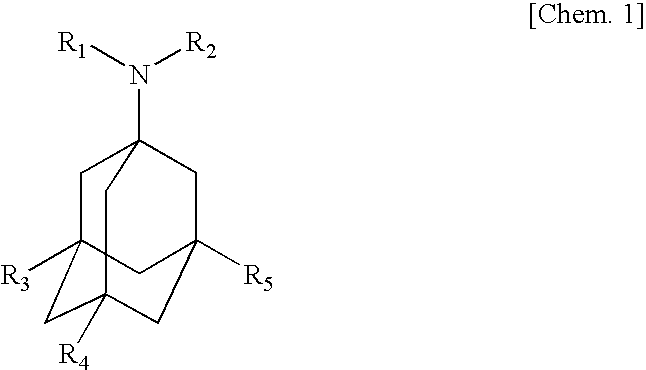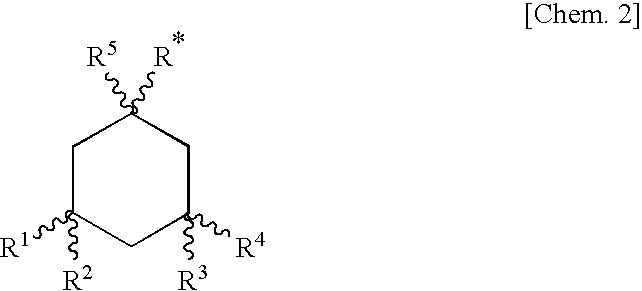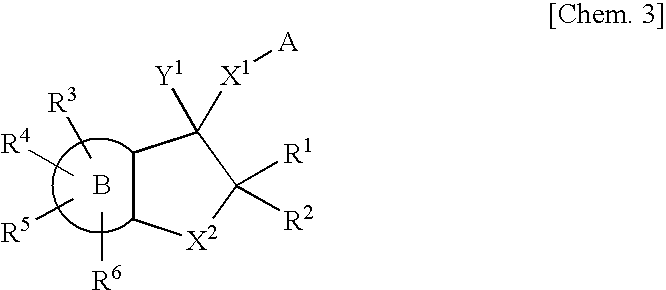Aminoindane derivative or salt thereof
a technology of memantine and derivatives, applied in the direction of nitro compound active ingredients, drug compositions, applications, etc., can solve the problems of not being used in clinical applications and the safety margin of memantine as a medicine is still not satisfactory
- Summary
- Abstract
- Description
- Claims
- Application Information
AI Technical Summary
Benefits of technology
Problems solved by technology
Method used
Image
Examples
reference example 1
[0097]To a solution of 3-hydroxymethylindan-1-one (1.23 g) and methyl iodide (4.31 g) in THF (20 ml) was added 55% oily sodium hydride (1.33 g) under ice-cooling, followed by stirring at the same temperature for 1 hour. To the reaction liquid was added a saturated aqueous ammonium chloride solution, followed by extraction with ethyl acetate, washed with saturated brine, and then dried over anhydrous magnesium sulfate, and the solvent was evaporated under reduced pressure. The residue was purified by silica gel column chromatography (eluent; n-hexane:ethyl acetate=10:1) to obtain a compound of Reference Example 1 as an oily substance.
reference example 2
[0098]To a solution of t-BuOK (3.0 g) in THF (7 ml) was added a solution of methyl 3-oxoindane-1-carboxylate (1.0 g) in THF (2 ml) at −20° C., followed by stirring at the same temperature for 30 minutes. To this was added methyl iodide (4.5 g), followed by stirring for 30 minutes while warming to room temperature. The reaction liquid was ice-cooled, and partitioned between 1 N hydrochloric acid and ethyl acetate. The organic layer was washed with saturated brine, and then dried over anhydrous magnesium sulfate, and the solvent was evaporated under reduced pressure to obtain a compound of Reference Example 2 (1.2 g) as an oily substance.
reference example 3
[0099]To a solution of the compound of Reference Example 2 (3.2 g) in DMSO (20 ml) was added LiCl (1.2 g), followed by stirring at 200° C. for 2 hours. After cooling the reaction, it was partitioned between 1 N hydrochloric acid and ethyl acetate, and the organic layer was washed with water and saturated brine. It was dried over anhydrous magnesium sulfate, and the solvent was then evaporated under reduced pressure. The residue was purified by silica gel column chromatography (eluent; n-hexane:ethyl acetate=4:1) to obtain a compound of Reference Example 3 (1.9 g) as an oily substance.
PUM
| Property | Measurement | Unit |
|---|---|---|
| Mass | aaaaa | aaaaa |
| Mass | aaaaa | aaaaa |
| Mass | aaaaa | aaaaa |
Abstract
Description
Claims
Application Information
 Login to View More
Login to View More - R&D
- Intellectual Property
- Life Sciences
- Materials
- Tech Scout
- Unparalleled Data Quality
- Higher Quality Content
- 60% Fewer Hallucinations
Browse by: Latest US Patents, China's latest patents, Technical Efficacy Thesaurus, Application Domain, Technology Topic, Popular Technical Reports.
© 2025 PatSnap. All rights reserved.Legal|Privacy policy|Modern Slavery Act Transparency Statement|Sitemap|About US| Contact US: help@patsnap.com



